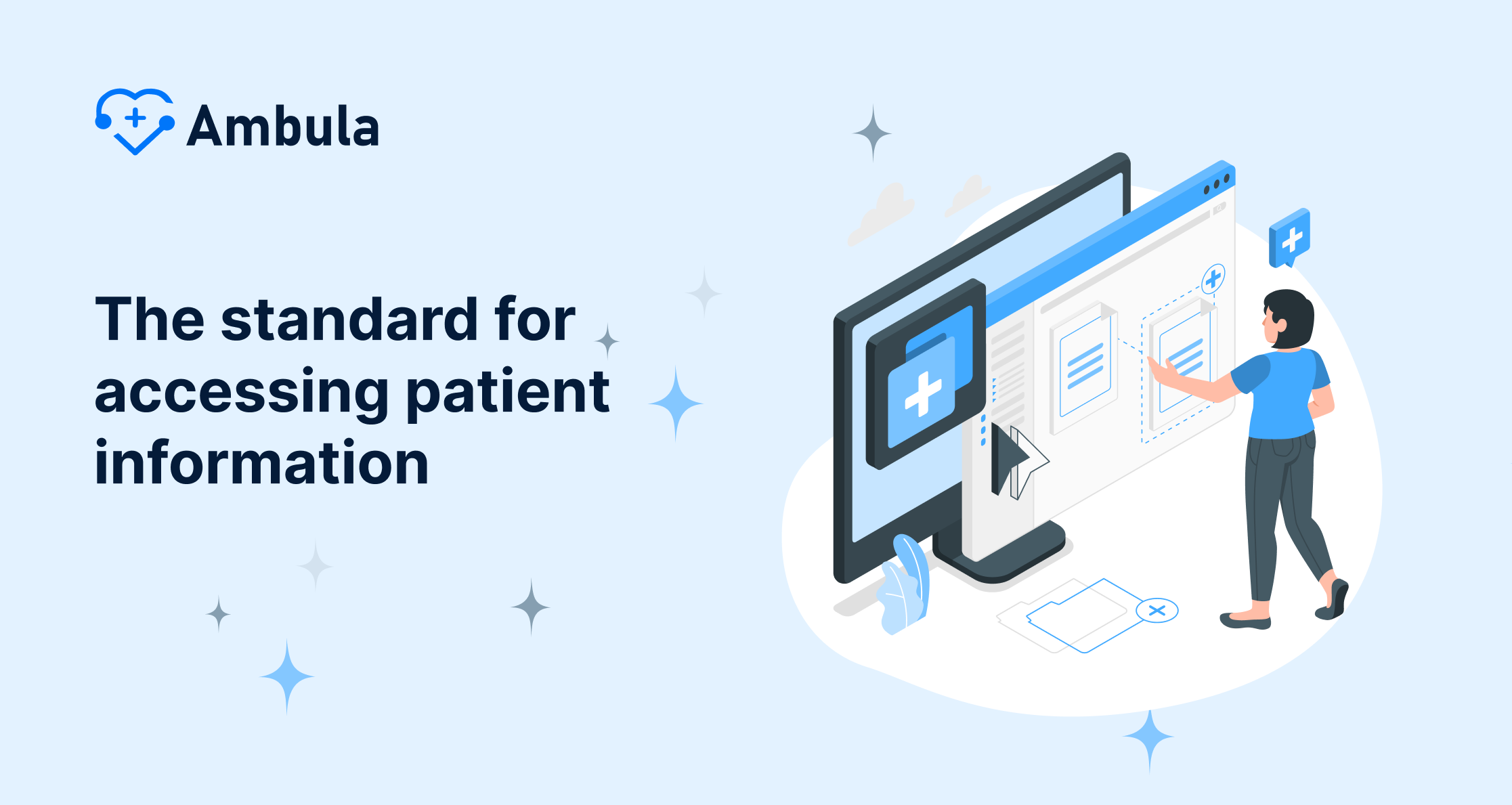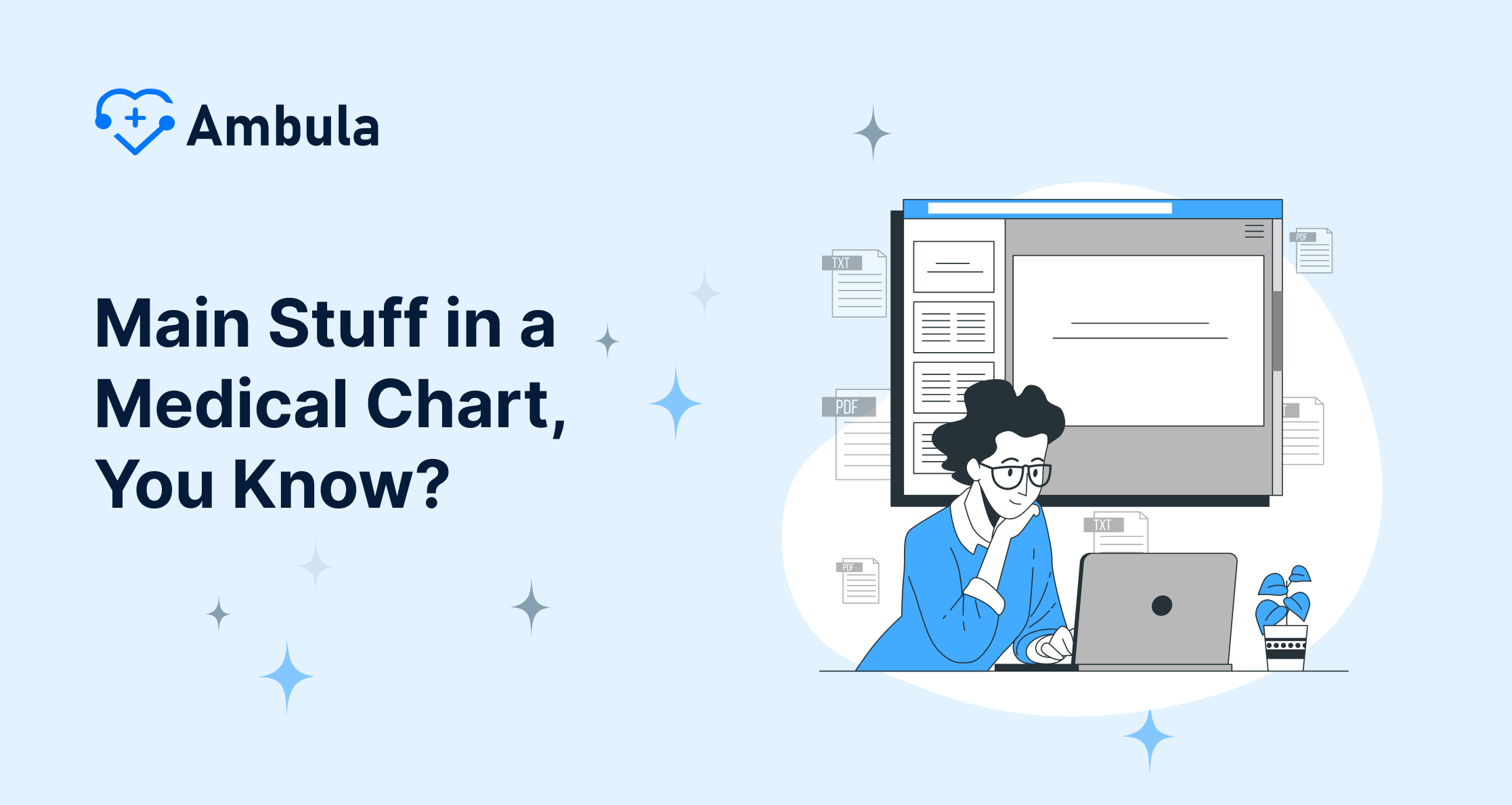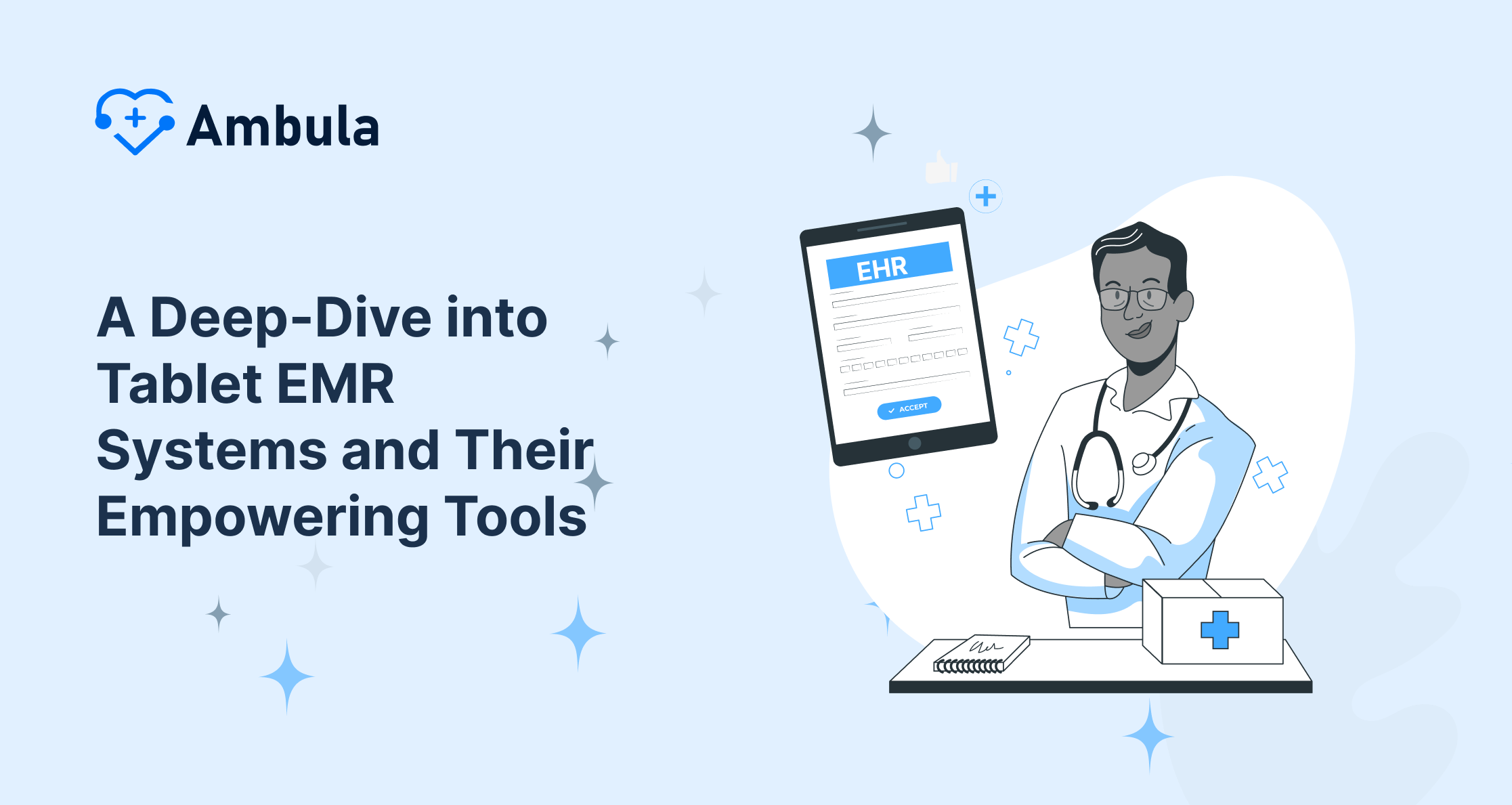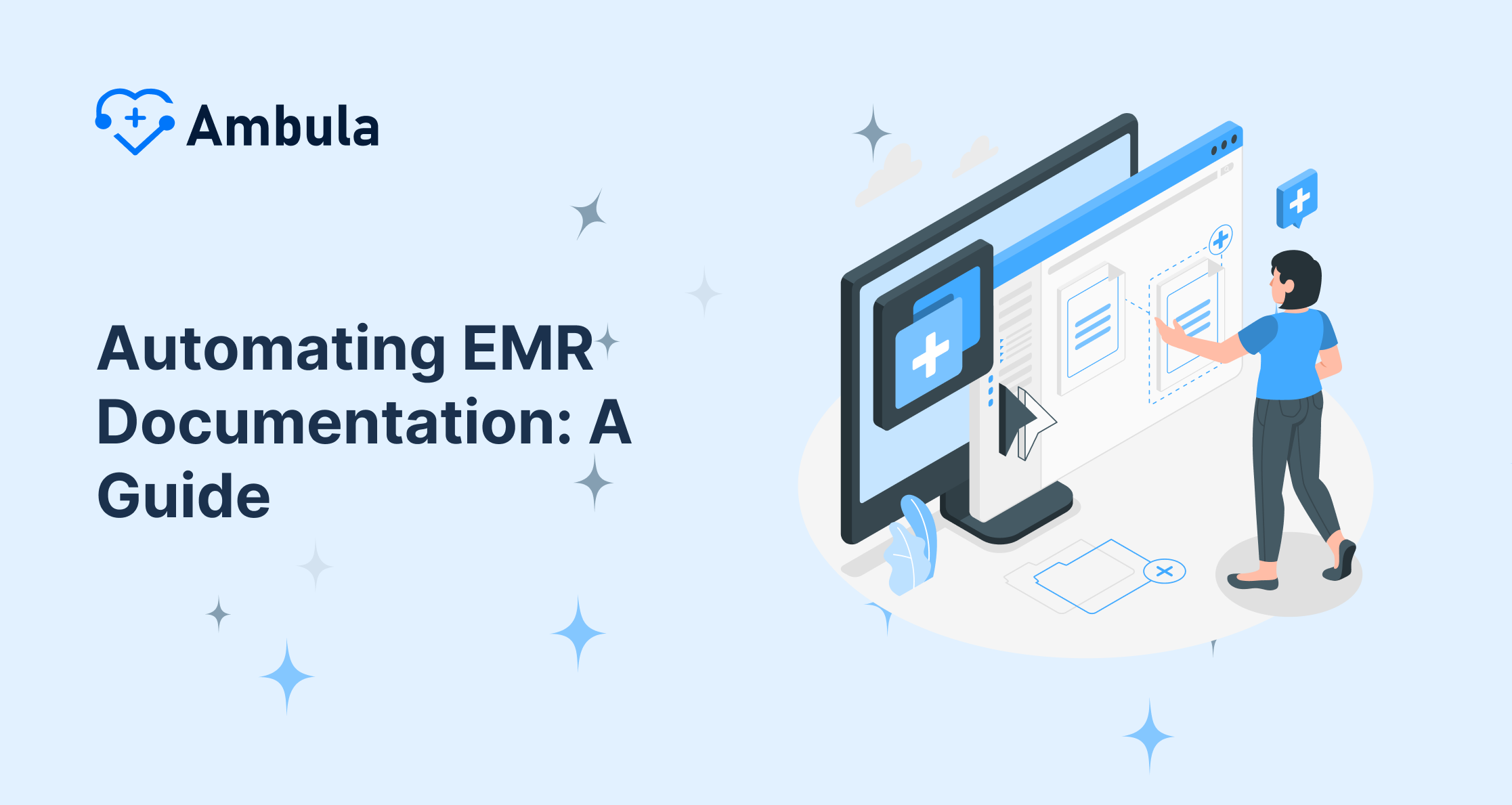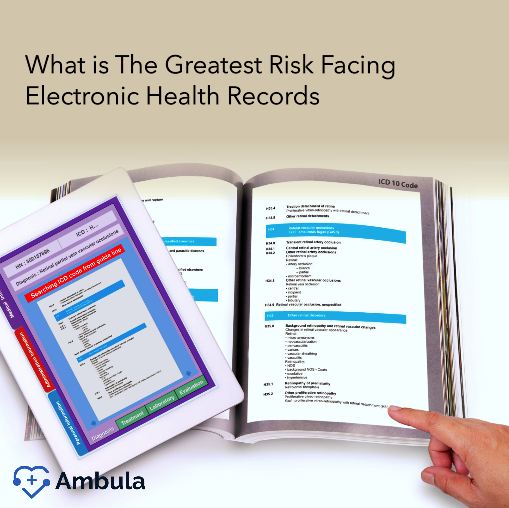The standard for accessing patient information
Topics:
- What is a medical chart?
- What type of data primarily composes a medical chart?
- Other data inside a medical chart
- Who can access a medical chart?
- Standards for accessing information
- Ambula: The Future Of ASC Medical Charts
Curious about how folks get to peek at patient details? Well, to grasp the rules, you gotta first figure out the stuff that goes into someone’s medical records. Oh, and before jumping into that, it’s super useful to get a tour of patient medical charts.
What’s a Medical Chart?
So, in a world where doctors and nurses hustle, medical records get called a bunch of things. You might hear them as health records, medical files, or patient charts. It’s all about this secret file that packs all the details of your health history and the medical stuff that’s been done to you. Healthcare providers rely on these super-detailed patient histories to figure out what to do about your health and treatment. Now, if we’re talking specifics, a medical chart might hold stuff like:
- Notes from when you chatted with your doc online or on the phone
- What the nurse jotted down about you
- Notes about any procedures you’ve had
- SOAP notes (that’s the subjective, objective, assessment, and plan stuff)
- Updates on how you’re doing
- The lowdown from any consults
- What another doc said if you asked for a double-check
Keeping outpatient services in view, notes from multiple healthcare providers who checked out the same patient might show up in their electronic health record (EHR). This helps keep the patient’s treatment consistent.
Check out these articles after you’re done
Main Stuff in a Medical Chart, You Know?
So, the big deal in a medical chart is pretty much patient info, like their health history, the treatment they got, any meds they take, and lab test results. Yeah, and also, it’s got notes from all the doctors and nurses who’ve been looking after them. Plus, all their allergies are in there too, which is super important to avoid any bad reactions and stuff.
Knowing what medical records contain is key to getting the hang of the rules for looking at medical records. Medical records pack a patient’s medical timeline, including health conditions, shots, ongoing and momentary illnesses, treatment plans, and test results. , the main point of medical records is to keep docs up to speed on someone’s health to ensure spot-on diagnosis, care, and follow-up, plus keeping well and stopping new health problems. With tech getting fancier, so is healthcare. Talking about patient medical information, the surge in EMRs and electronic health records has given healthcare peeps a way to snag & sort real-time data in one’s digital health record, and that includes:
- Confirming patient demographics: we need to check stuff like when they were born, what race and age they are, their gender how to hit them up, what ethnicity they rep, and the language they’re down with all while sticking to the Medicare rules for helping folks get connected.
- Doctor’s appointments: we’re talking about getting a second opinion, that first time sit-down regular health check-ins touching base after treatment, and any kind of medical procedure.
- How they grew up: looking at reports about different growth stages such as how they vibe with others, their smarts, feelings, and even how they move.
- Medications they took before and what they’re on now
- Stuff they can’t stand, like different foods, meds, and all that
- Current and past health issues: all kinds of sickness, both stuff that sticks around and stuff that just popped up, along with any other problems
- Old health records, like stuff they’ve been through before
- History of going under the knife, any surgery stuff they’ve had done
- Let’s start with social history, that’s your job, who you’re married to, and how much school you had. Don’t forget stuff like drinking smoking, who you’re dating, what you eat, and if you’re a gym buff or not.
- Now talking about family history, you gotta know what sicknesses your folks and relatives have. Keep your eyes peeled for stuff like cancer or problems like sugar disease, memory loss, fits, and things like that.
- When chatting about obstetric history, it’s all about how the baby-makin’ went, any babies you had before, and the tough spots you might’ve hit.
- Then there’s the shots you’ve got and when you got ’em. Think littles’ shots old folks’ lung sickness, the flu, shingles, and the jab for the ‘rona.
Extra Details in a Medical Chart
Besides the vast amount of health record information mentioned before, medical records pack in heaps more details super important for looking after patients. You’ve got parts zoned in on all kinds of things specific to somebody’s care. You might run into info tagged under groups like:
- Doctor’s Decisions and Healing Strategies: Doctors jot down their diagnostic verdicts and what they want to do to treat ya.
- Need-to-Do Things: Here you’ll find specific instructions for tests needing pictures taken inside your body, and checking your blood, along with stuff like prescriptions, telling you to see a specialist, and a bunch more.
- What they Found Out: Once they’ve done all that check-up and thinking stuff, they’ll toss in the outcomes here—like what they saw on the scans and what your blood tests say. Plus, they can throw in extra info by typing it in or uploading it to your file.
- Body Check: They keep tabs on things in this part, like how fast your heart’s thumping, your blood pushin’ pressure how quick you’re breathing, and more like that.
- Physical Examination: In this part, doctors tap on the body with percussion tools to find weird fluids. They use a stethoscope to check out how well the heart valves and heartbeat are doing, along with other tools to examine you.
- ROS or Review of Systems: Over here, it’s all about your body systems. They whip up a bunch of questions to spot anything off or any sicknesses.
- HPI (history of present sickness)
- CC or Chief Complaints: And then, this bit gets down to why the patient started having issues or what made them think, “Hey, I gotta see a doctor.”
Who can access a medical chart?
So the HIPAA privacy stuff makes sure patients can get a look at their health record information and it also puts a limit on who else can take a peek. This is all about keeping things private for patients and making sure the info is safe and sound. Basically the patient, someone they choose, or a healthcare worker allowed to do so can get into the medical records if they ask nice. What it boils down to is you can’t just snoop around in an EMR / EHR system or tell others what’s in it unless the patient says it’s cool. This is super important for making sure patients stay in charge of their info and own their data.
Standards for accessing information
Under the HIPAA Privacy Rule, entities covered by HIPAA must allow people to see or get copies of their own protected health information (PHI) in the records they keep. So, if a person wants to, they’re able to check out or snag a copy of their PHI. Plus, they have the power to tell the entity where they wanna send that info, like if they’ve got a specific person or place in mind. And hey, they’ve got the right to peek at this PHI for as long as they’re under the entity’s HIPAA umbrella.
In regards to the distribution and sharing of access to a patient’s information before EMRs/EHRs, it was never a streamlined process. A physician’s office or a surgical center would use fax, email, and even tangible mail to share patient information. Nowadays, the standards have drastically changed, as the use of patient portals and connected EHRs allow physicians and patients alike to access information quickly and efficiently.
Ambula: The Future Of ASC Medical Charts
Ambula EMR system provides similar solutions with a lawyer portal for personal injury cases and a billing portal for medical billers who want access to patient information to submit claims accurately. Mainly, this digital system is becoming the new standard for safely granting access to patient information. As long as HIPAA regulations are followed and the channel of distribution used to share patient information is ensured to be secure, then the ease at which such information is shared will remain unmatched. In conclusion, medical charts are a very delicate and significant area within the healthcare field. One tiny mistake can result in irreversible damage. Therefore, it is important to secure the most effective and revolutionary approach to electronic medical charting available, one of which is the Ambula ASC-focused EMR.
To find out more about medical charts and how Ambula can improve your EMR experience, feel free call the Ambula Healthcare team at: (818) 308-4108. And now, are free EMRs effective?

